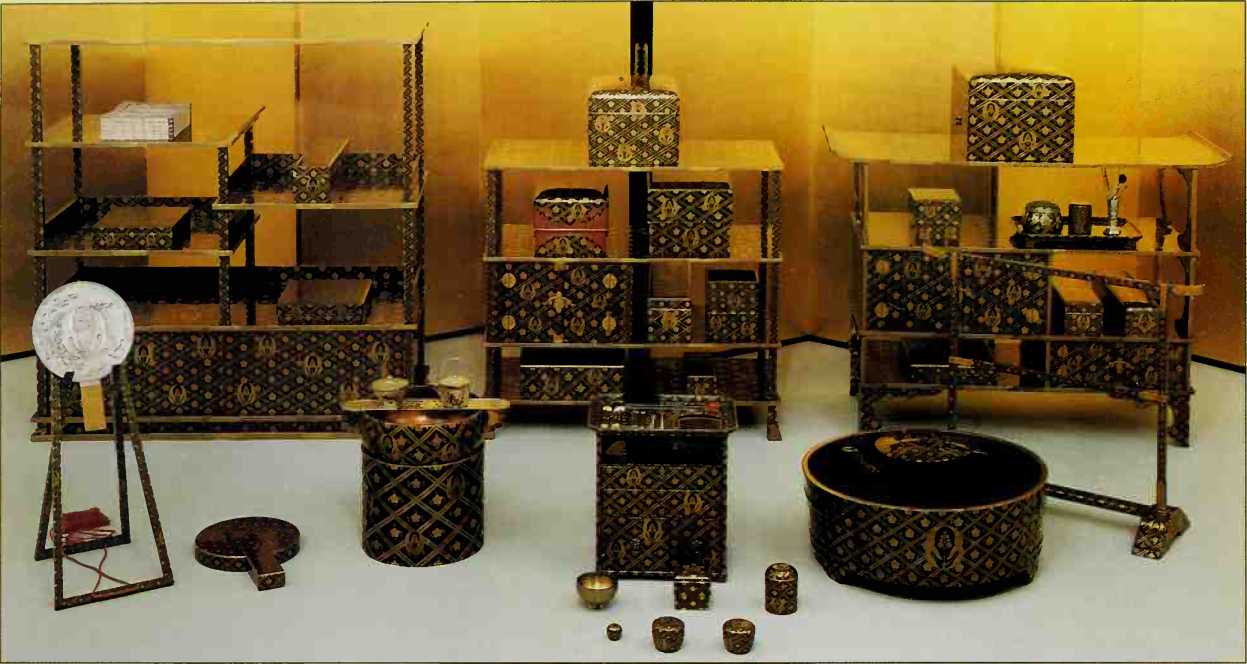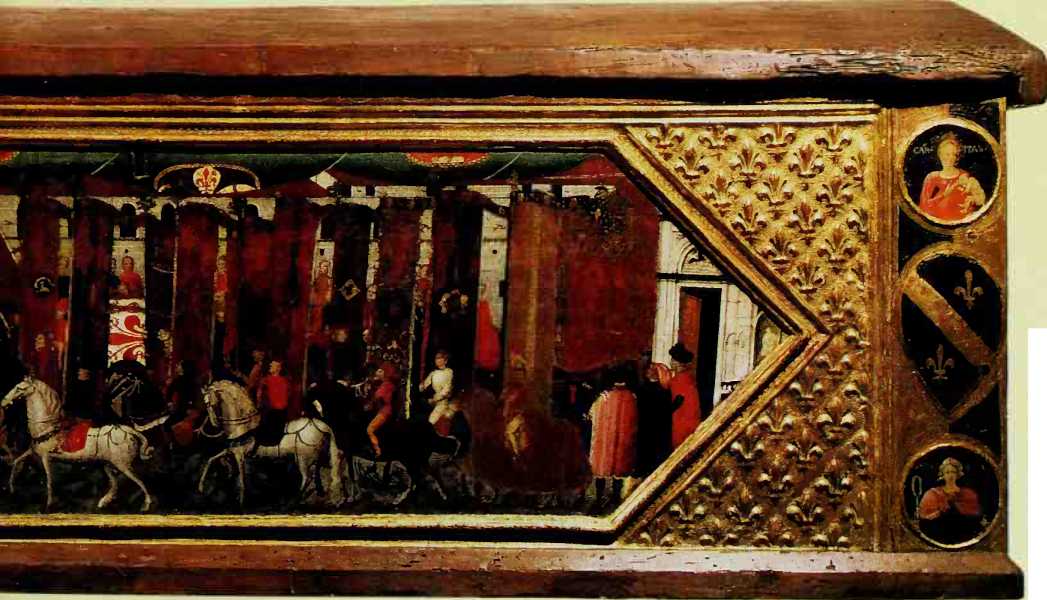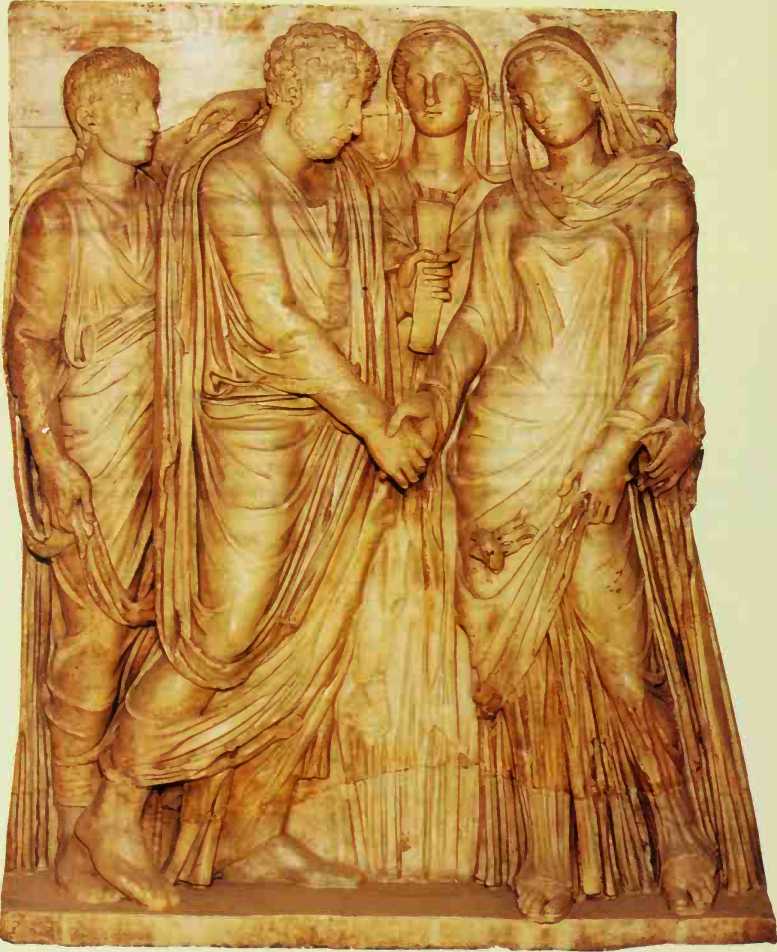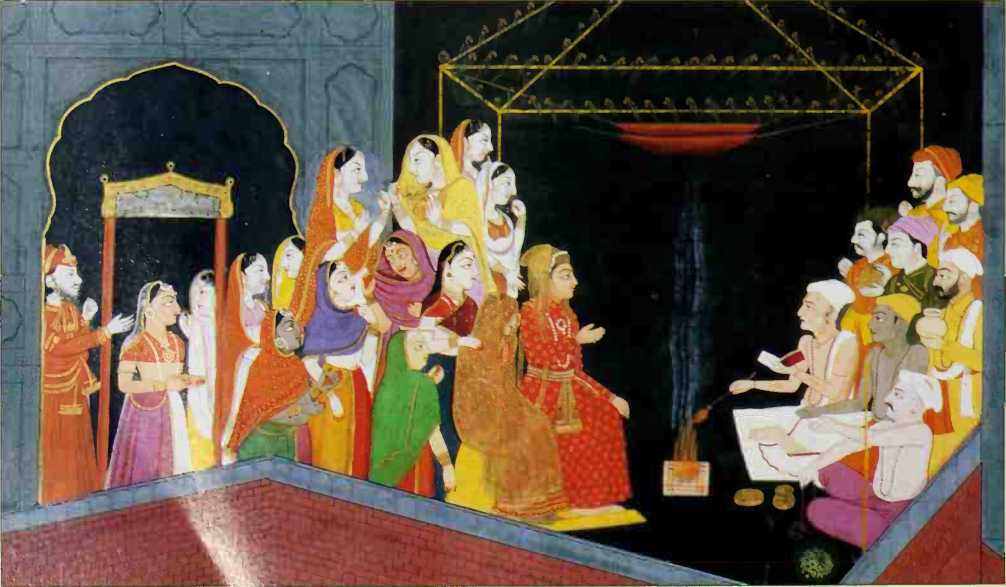

Attesting to the wealth of her ancestral home, the lacquered and gilded trousseau of a nineteenth-century Japanese bride includes requisites for upper-class married life. Plum blossom and water plantain—her husband's family crest—decorate the cosmetic boxes, writing case, bookshelves, mirror, washbasin, and clothes racks for the new house.
On a painted chest dating from the Renaissance, a procession approaches the baptistery of San Giovanni in Florence. The massive coffer contained the new clothes and household linen assembled by a wellborn maiden in anticipation of her marriage.
Rom the time that the first temple priest in ancient Sumer pulled a thread each from the garments of a bride and groom and tied these filaments together in a knot, wedding ceremonies have consisted of a series of symbolic acts. To mark the moment when tvo single people become a married couple, hands may be joined to affirm physical union, a ring offered to the bride as a relic of some ancient custom of purchase, a drink taken from the same consecrated cup, ritual foods consumed, specific promises exchanged aloud, or veils lifted as a statement of intimacy and exclusivity.
The attendance of a priest or other holy official has not always been considered a requisite. Equally important, and far more universal, has been the participation of family and friends. These companions have filled traditional roles as bridesmaids or attendants for the groom, as living links with ancestors, and as witnesses to the fact that the marriage has been solemnized in accordance with the customs of a particular time and place.

Sculpted in marble on the side of a sarcophagus dating from the second century, a Roman groom clasps his bride's right hand in his own to signify that the maiden has now passed into his possession. Behind, a maid of honor oversees the handing over of the bride in a ceremony that was a civil rather than religious occasion.

An eighteenth-century Indian painting illustrates a scene from fiindu lore: the nuptial rites of the future parents of Krishna, the human incarnation of the god Vishnu. In accordance with ancient Hindu practice, the bride and groom sit side by side in the open air while priests chant holy Vedic texts and add ghee—clarified butter—to the sacred fire to make its flames flare.




 World History
World History









